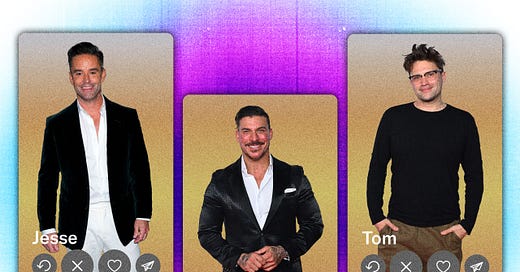It’s 100 degrees in New York so I hope everyone has found some industrial air conditioning to sit close to. I saw some people running this morning which felt performative. You can take a day off, no one cares.
Over the last couple of weeks I’ve been writing an essay for GQ about The Valley, the Vanderpump Rules spinoff centered on the older millennial part of the original crew at Pump and SUR. It is, without a doubt, one of the grimmest programs on television. It’s not exploitative like the marathon freak shows TLC or Netflix runs. The darkness in The Valley is a lot more quotidian and recognizable because these people seem pulled from our own lives: couples that hate each other, couples that seem like they love each other but struggle all the same, couples that make their derangements work for them. The Valley is about the incommensurability that makes up the core of every relationship, the idea that we are so unknowable to one another that it drives us insane. That’s what makes the show such a deeply affecting piece of media. It’s divorce autofiction in HD.
So I wrote about it for GQ. The essay started as more of a multimedia comp thing, where I wanted to focus on the four major divorce lit books of the last 18 months (Sarah Manguso’s Liars, Miranda July’s All Fours, Leslie Jamison’s Splinters, and Maggie Smith’s You Could Make This Place Beautiful) and make the case that The Valley should be considered part of the modern divorce art canon. We ended up making this more of a wide cultural sweep about the Divorced Guy, which I think is equally important — though I did get to reference my essay I wrote for
a few months ago about the sympathetic reaction to watching reality stars be miserable. I also got an Agnes Callard reference in there, which is the first time she’s ever been name dropped in the pages of GQ.







Love your GQ piece, T.M.